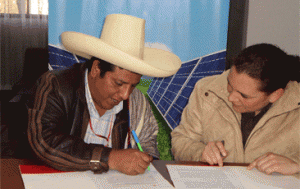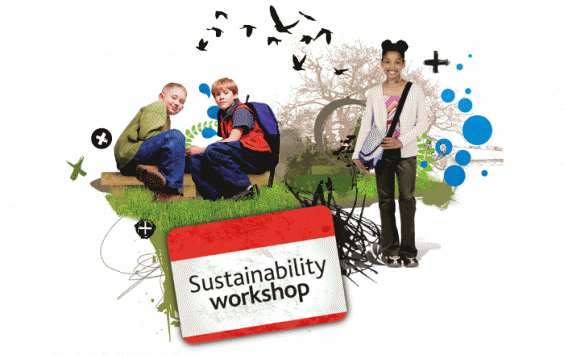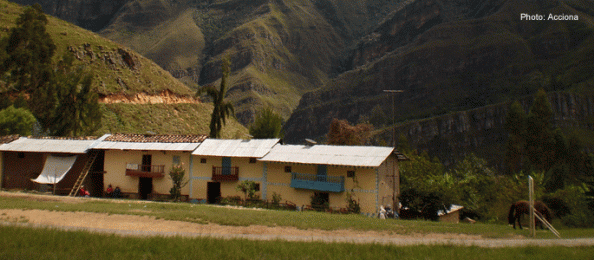Light at Home: Sustainable Energy Access in Isolated Rural Areas
The ACCIONA Microenergy Foundation was created to focus the Company’s efforts on social development activities that could meet the real demands and basic needs of the rural population in developing countries. The Foundation’s goal is to work with others to increase access to basic energy, water, or infrastructure services for people and communities that lack the means to acquire such basic services.
Nearly a third of the current world population has no access to modern forms of energy, while the energy consumption pattern of developed countries is clearly unsustainable owing to its heavy reliance on fossil fuels and their environmental impacts, mainly through the effects on climate change. Lack of access to modern energy sources is limiting human development and hampering efforts to achieve the Millennium Development Goals, as recognized by the IEA and UNDP. ACCIONA is a world leader in the renewable energy sector, and through this program, which it plans to extend to other locations, it is contributing to the development and diffusion of environmentally-friendly technologies (Principle 9 of the Global Compact) and focuses its use on aiding poorer societies in their efforts to develop.
Needs and problems of rural electrification
Peru is the South American country with the second-lowest electricity coverage and Cajamarca is the region of Peru with the lowest level of electrification. About 70 percent of households in rural areas of Cajamarca have no electricity supply. Despite considerable efforts made by central and regional governments and various other agents in the electrification sector to expand the electricity grid, it will be many years before electricity reaches every household. The high dispersion of rural housing and the lack of road infrastructure, coupled with the local terrain and climate, makes the installation and maintenance of electrical networks costly. In this situation, Solar Home Systems (SHS) can provide basic electrical services until electricity grids reach the affected areas in 15 or 20 years.
The battery in an SHS accumulates electrical energy converted by the photovoltaic panel from the sun’s energy, and allows for use (4 hours) of lights and radio or low-consumption television sets. Moreover, the battery stores energy for two days’ consumption without sunlight. The impact of extending the activity by almost 50 percent is very positive and is highly valued by users who are subsequently able to utilize it for productive activities (crafts, etc.) cultural activities (reading, writing, information, etc.), or social activities (meetings, leisure, etc.).

Microenergy Peru: A model of sustainable off-grid rural electrification
The first barrier to the use of the SHS is the initial investment amount. The price is high for families with very low income, in view of the fact that it is quality equipment designed to last many years. The initial investment is carried out based on gifts of shares and other support mechanisms. For example, the Ministry of Energy and Mines is co-financing rural electrification, and although most of these funds are dedicated to grid extension, a small portion is devoted to finance investment for off-grid electrification. Therefore, the initial investment is covered through donations to Microenergy Peru, which is the owner of the SHS.
The targeted locations are selected in dialogue with the authorities and based on areas not covered by the grid extension plans, and projects are being supported by the majority of the population and its institutions. Each location has its own Electrification Committee. The second barrier to the use of the SHS is its continuity over time. It is hard to find a photovoltaic system used in isolated rural areas of developing countries –the system’s panels have a lifespan of 20 years and are operational within five years.
To solve this problem, Microenergy (PEME) was created; its main function is to operate and maintain the SHS. The fee-for-service management model was adopted: Users pay a monthly fee to use the energy of the SHS installed in their homes. The fee paid to PEME covers the costs of maintaining the SHS in optimum operating conditions (inspections and checks to avoid failure) and replacing elements that have a shorter life – such as the battery or the regulator – over the 20-year lifespan of the photovoltaic panel.
Affordability and adequate electric regulation
The third barrier to the use of the SHS is its affordability for end-users. There is no point in an initiative that is not affordable for the families that it sets out to help. To make sure that users could afford to use the SHS, PEME conducted socioeconomic field surveys on a significant sample of the population. The decision taken was to charge a monthly payment of around $5. They settled on this amount as most of the potential end-users were already spending an equivalent amount on candles, kerosene, batteries, battery charging, etc., which means that the new lighting systems – in addition to being more efficient and involving less risk – represent a financial savings for the majority of users. Moreover, the payments provide a total income that allows PEME to meet the costs of their commitments. The fact that the initial investment is a donation, and therefore not considered the return on investment, allows PEME to set a very affordable fee.
Barriers and solutions for nonconventional rural electrification
| Barriers | ACCIONA Microenergy Foundation solutions |
| High Initial Investment | Donation from promoters and others |
| Sustainability | Nonprofit service company with a fee-for-service model |
| Affordability | • Fee related to actual cost paid for substitutes -No regulatory discrimination in relation to on-grid electrification (same subsidies) |
|
|
• No regulatory discrimination in relation to on-grid electrification (same subsidies) |
In Peru, networked users in poor households with a low energy consumption benefit from a cross-subsidy called FOSE, which covers about 60 percent of the charges. This type of poor family pays only 40 percent of the charges. However, SHS users are not eligible for this allowance, despite being a needier group. In late 2009, the Ministry of Energy and Mines of Peru amended the regulation of the Rural Electrification Act to consider nonconventional rural electrification and development of photovoltaic rates. This regulatory reform will, once developed, lower the fees paid by end-users of an SHS, and represents a significant cost-savings for these families.
Participation of the beneficiaries
For the past year, one SHS has been installed in each beneficiary location to enable users to become familiar with the capabilities and limitations of the SHS. This demonstration phase was conducted to avoid some reluctance stemming from poor experiences in the past. In view of the positive reception, the installation of the first 600 SHSs is currently under way, and it is hoped that the rest of the facilities will be completed in 2011.
Each locality has elected its Electrification Committee, which takes active part in the project, both in the aspects of reporting and monitoring and in the management of fee collection. Another important aspect is the training of users, who tend to be people with very little formal education, but who need to know how to get the most from their SHS without reducing its useful life.
The success of this initiative depends on the involvement of beneficiaries and the support of their municipalities, with which PEME have signed partnership agreements.
ACCIONA’s Sustainability Workshop

ACCIONA’s Sustainability Workshop takes its cue from the United Nations, which declared the period 2005–2014 as the “Decade of Education for Sustainable Development” (DESD). The Workshop helps to add value to schools and educational centers by helping kids to understand the principles of sustainability and by showing them how to apply those principles. The Workshop helps kids and youngsters gain an understanding of the problems that lie ahead. It helps them to become young experts in highly relevant issues such as efficient energy use, access to water, energy-efficient building and urban planning, and innovation.
The Workshop
- is totally free of charge for participating schools and educational centers,
- fits seamlessly into the existing education policy and school curriculums,
- provides training for teachers and educators,
- gives kids hands-on experience, with guided tours of wind farms, R&D centers, wastewater treatment plants, and other installations.
The background
ACCIONA’s Sustainability Workshop is an updated continuation of the highly successful Renewals, Energy for Sustainability education program launched by ACCIONA’s energy division in 1994 in Catalonia and Navarre, Spain, in cooperation with local and regional education authorities. Now ACCIONA is taking this initiative to other countries that are also aware of the importance of education as an instrument for attaining sustainable development.
To date, more than 110,000 primary and secondary schoolchildren and teachers have taken part in the program’s guided tours of ACCIONA renewals installations, such as wind farms, solar energy and mini hydro plants, and biofuel production centers, among other things.
What makes the ACCIONA Sustainability Workshop so special?
- It fits seamlessly within existing curriculums in those countries where it is being developed, leaving the way clear for cooperation with the corresponding education authorities.
- It can be presented alongside other innovative education strategies and is fully consistent with the approach already being adopted in schools.
- It provides a variety of teaching and learning materials designed to install pro-environment values and to help teachers and students to create a more sustainable and fairer world – a planet at one with nature.
- It adapts perfectly to local needs and requirements, with an approach in terms of availability and communication that will forge links with teaching staff and education authorities.
- The Workshop is subject to continuous assessment by users (teachers, pupils, etc.) and results are shared with the education authorities, providing feedback on content.
- Visits to ACCIONA facilities (wind farms, solar plants, etc.) are free of charge for participating schools.
This project description was originally presented in the Global Compact International Yearbook 2010.
Juan Ramón Silva Ferrada is Area General Manager Sustainability at ACCIONA.
About Us // Privacy Policy // Copyright Information // Legal Disclaimer // Contact
Copyright © 2012-2018 macondo publishing GmbH. All rights reserved.
The CSR Academy is an independent learning platform of the macondo publishing group.









